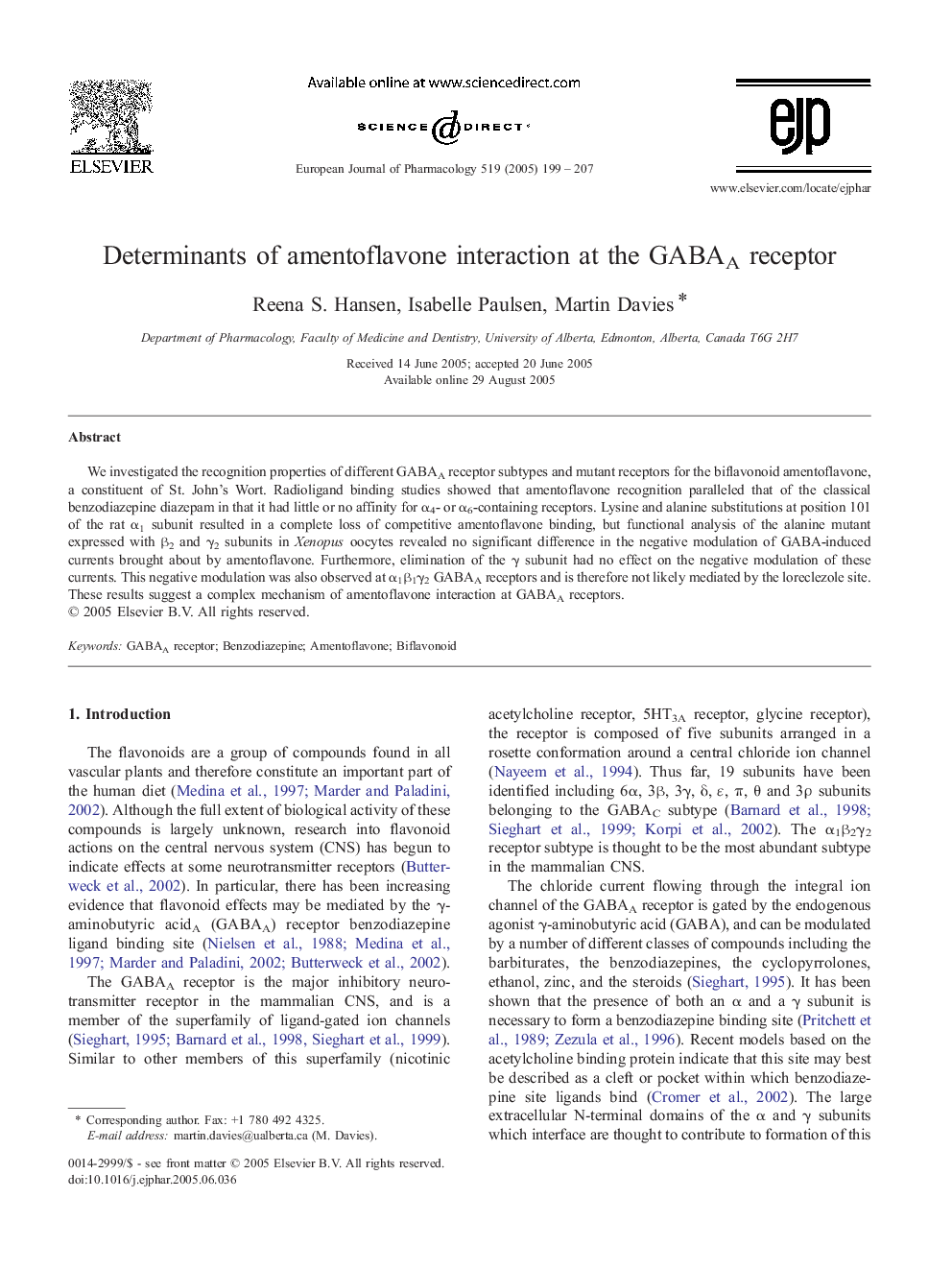| Article ID | Journal | Published Year | Pages | File Type |
|---|---|---|---|---|
| 9921132 | European Journal of Pharmacology | 2005 | 9 Pages |
Abstract
We investigated the recognition properties of different GABAA receptor subtypes and mutant receptors for the biflavonoid amentoflavone, a constituent of St. John's Wort. Radioligand binding studies showed that amentoflavone recognition paralleled that of the classical benzodiazepine diazepam in that it had little or no affinity for α4- or α6-containing receptors. Lysine and alanine substitutions at position 101 of the rat α1 subunit resulted in a complete loss of competitive amentoflavone binding, but functional analysis of the alanine mutant expressed with β2 and γ2 subunits in Xenopus oocytes revealed no significant difference in the negative modulation of GABA-induced currents brought about by amentoflavone. Furthermore, elimination of the γ subunit had no effect on the negative modulation of these currents. This negative modulation was also observed at α1β1γ2 GABAA receptors and is therefore not likely mediated by the loreclezole site. These results suggest a complex mechanism of amentoflavone interaction at GABAA receptors.
Related Topics
Life Sciences
Neuroscience
Cellular and Molecular Neuroscience
Authors
Reena S. Hansen, Isabelle Paulsen, Martin Davies,
